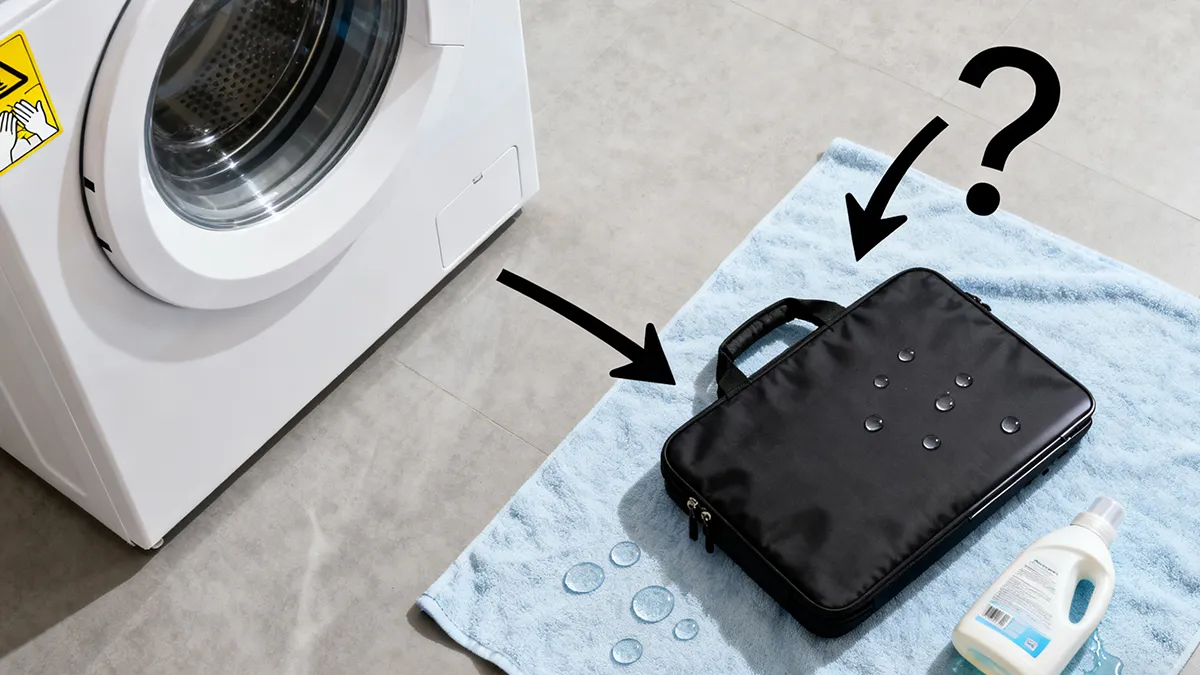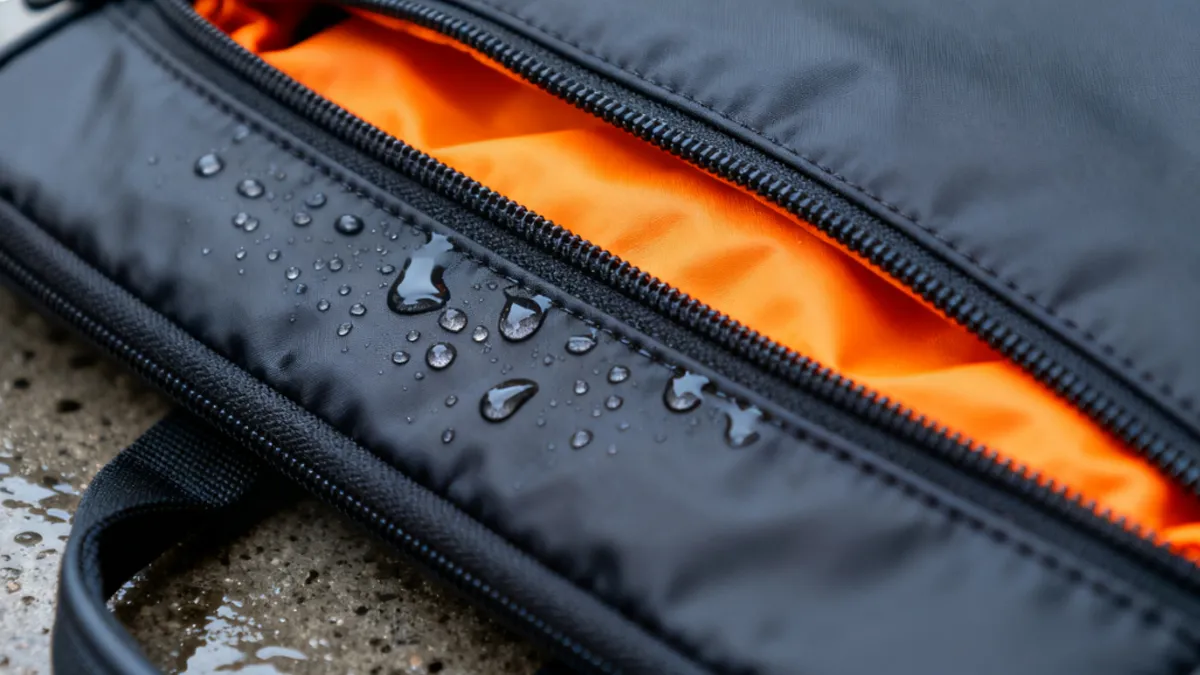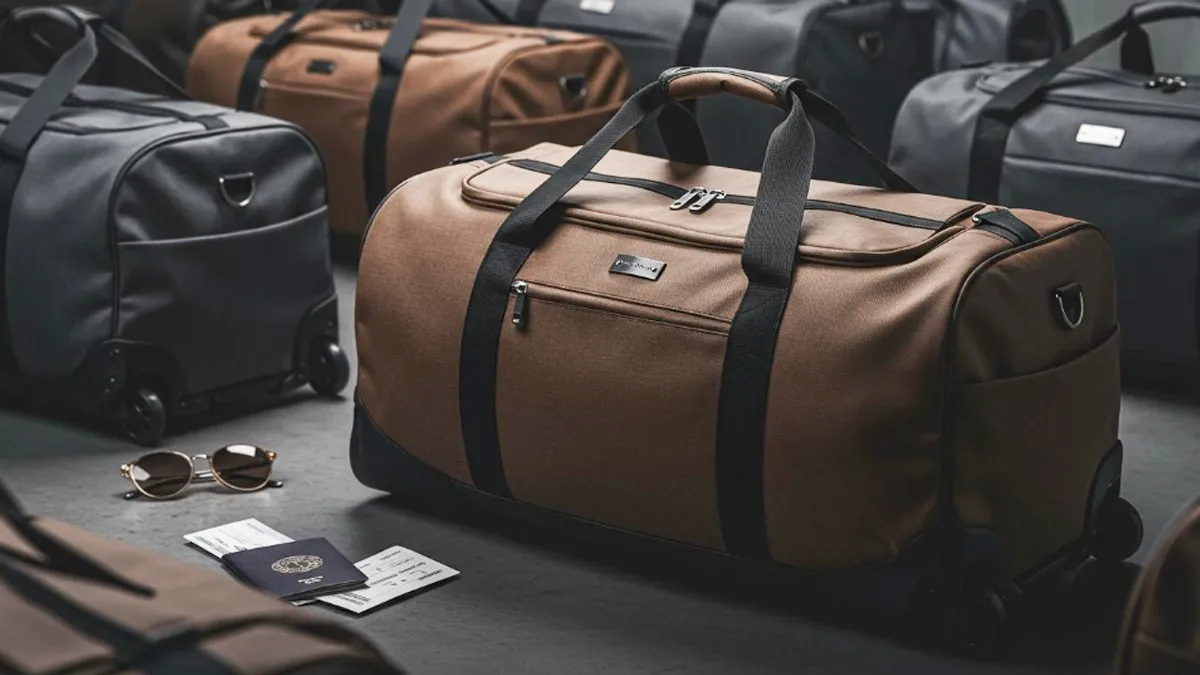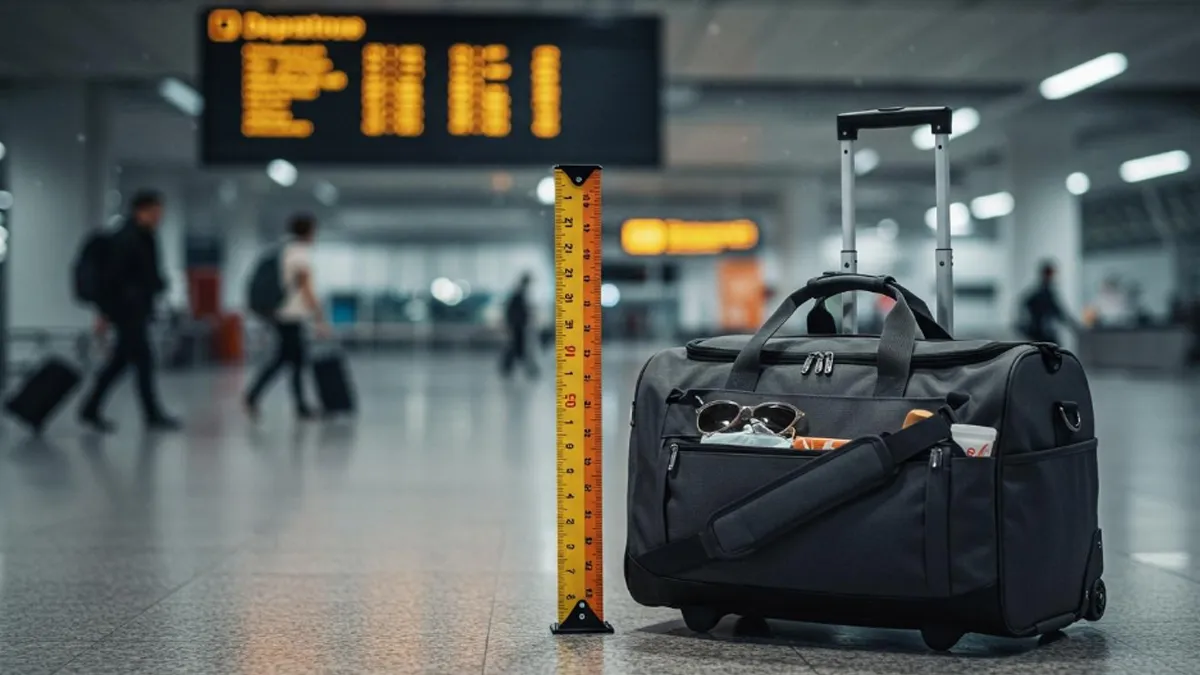Backpacks look simple at first glance, but small design choices change how they feel on your shoulders, how fast you can grab what you need, and how long they last. Pick the right pack and your day becomes smoother. Pick the wrong one and the same walk to class, commute across town, or trail to a ridge line can feel heavier and more frustrating than it needs to be.
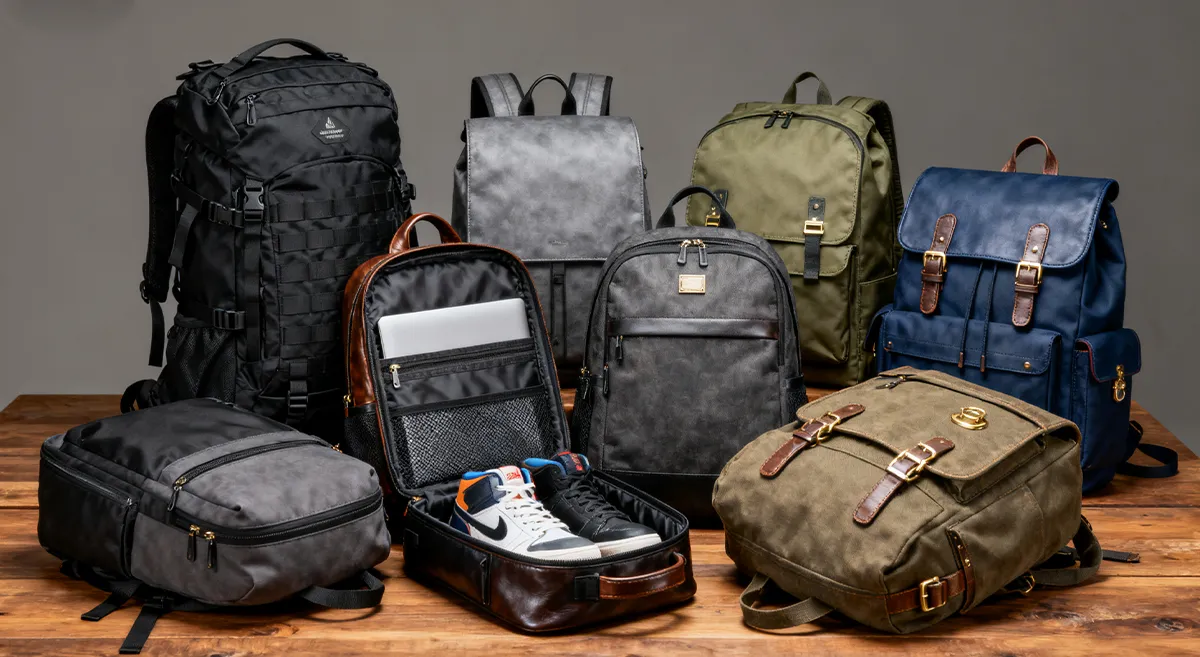
Types of Backpacks by Use Case
Different days demand different packs. Below are the most common families of backpacks, explained in plain language, with the real strengths and natural trade-offs of each.
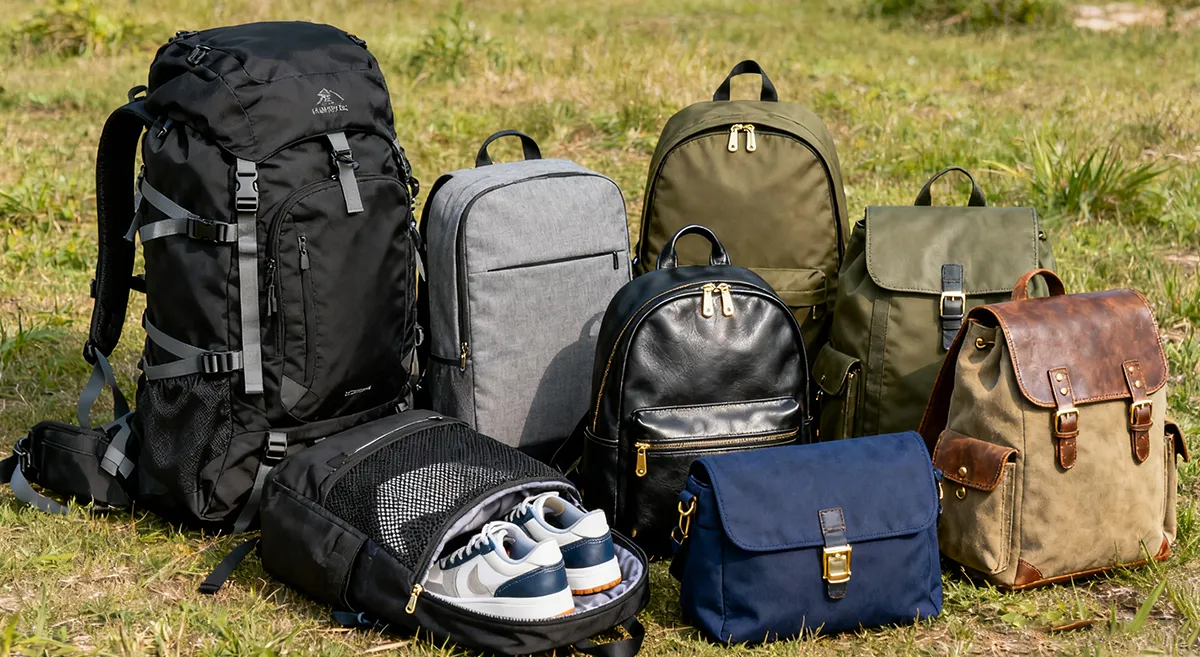
Everyday Carry and City Commuter
An everyday carry pack, often called an EDC, aims to disappear into your day. You slip in a laptop, a light jacket, a notebook, and a bottle, then forget about it. The sweet spot is usually 15 to 20 liters, enough room to carry essentials without turning your back into a walking shelf. Good EDC packs feel tidy inside and unfussy outside. A quick-access pocket at the top becomes the home for keys and transit cards, a side pocket hugs the bottle so it does not rattle, and a luggage-pass-through strap turns airport lines into a one-hand push.
Where an EDC shines is rhythm. You unzip, reach, and zip again in seconds. Where it struggles is bulk. If you routinely carry a hoodie, lunch, gym shoes, and a laptop, a small commuter bag begins to feel overstuffed. On those days a travel or gym crossover is a smarter fit.
Student and Campus Backpacks
Campus life is a test of durability and organization. A true school backpack must take constant load and floor drops while keeping shoulders happy. Look for a wide mouth that swallows thick textbooks, a reinforced base that shrugs off abrasion, and a back panel that does not turn into a sponge in light rain. Smart designs add reflective accents for late walks across campus and separate slots for calculator, pens, and student ID so the front pocket does not become a junk drawer.
The school pack also benefits from a forgiving shape. Square or slightly rectangular interiors stack books more efficiently than rounded tubes. If you carry a laptop, demand a padded sleeve suspended above the base. That little gap saves screens when the pack lands hard.
Laptop and Tech Backpacks
A true laptop bag does more than add a padded sleeve. The sleeve should float so a drop hits foam, not metal corners. The zipper should open wide enough that you can slide the device in and out without scraping. Cable management pockets tame chargers and dongles so they do not chew up the keyboard. RFID-shielded pockets add a simple layer of peace in crowded transit.
A tech pack walks a fine line: enough structure to protect electronics without becoming a stiff box. Many people discover they prefer panel-loader layouts here because they lay open flat on a desk or airport tray, making security checks and cables easier to manage. If you move through rain or snow, water-resistant fabric, coated zippers, and a storm flap go from nice to necessary.
Travel and Carry-On Backpacks
Travel backpacks behave like soft suitcases that happen to ride on your shoulders. The best ones hinge open like a book, with a 180-degree clamshell that lets you pack folded clothes on one side and soft items on the other. Compression straps inside act like a gentle hug to keep stacks neat. Travel sizes work backward from airline rules. Many brands target carry-on dimensions and volumes near the 35 to 45 liter range. Those numbers vary by carrier, so paying attention to width and depth saves headaches at the gate.
Great travel packs remember the little things that wear you down over a week of flights and buses. A hidden passport pocket sits where a thief cannot reach but you can. A suitcase handle pass-through bears the load at the airport. Some add expansion zippers for the trip home, when dirty laundry and souvenirs demand a little extra give.
Day Hike Packs and Running Vests
A day hiking pack focuses on water, snacks, and layers. You hike better when you are not thinking about the bag at all. That is where ventilated back panels earn their keep. Suspended mesh allows air to flow, moisture to evaporate, and shirts to stay drier. Water carries best in two ways: a reservoir against the spine with a hose routed to the strap, or tall side pockets that hold bottles without flopping. Pole loops and an ice axe point make alpine days easier, while a simple rain cover under the base turns surprise storms into a shrug.
Running vests dial the idea even closer to the body. The fabric wraps the torso like apparel, not luggage, and soft flasks sit high on the chest so you can sip without breaking stride. Capacity is small, but attention to bounce reduction makes these pieces feel invisible once adjusted properly.
Multi-Day Trekking and Backpacking
When you live from a pack, suspension and fit decide your mood. Internal frame systems push weight to the hips instead of dumping it on shoulders, and that one choice often means an extra day of comfort. Trekking packs typically range from 40 to 70 liters. The lower end suits weekend trips when gear is light and food is compact. The upper end serves longer journeys or colder seasons when sleeping bags and clothing grow in bulk.
Smart designs open beyond the top lid. A front U-shaped zipper or long side zip lets you reach a mid-layer without excavating three stuff sacks. Gear loops, shock cord keepers, and sturdy compression straps keep tents and pads quiet. Many brands offer gender-specific fits and torso length options so the hip belt actually sits on bone rather than soft tissue.
Tactical and MOLLE System Backpacks
Tactical packs are tool carriers at heart. They use high denier nylon or equivalent fabrics, heavy bar-tack reinforcement, and overbuilt hardware because failure is not acceptable in their primary markets. MOLLE webbing across the exterior lets you add pouches for radios, med kits, or organizers without committing to one internal layout. The result is a system that dresses up or down for range days, duty shifts, or rugged field work.
The trade-off is weight. Extra material and hardware make tactical packs heavier than minimalist cousins. For everyday use that may feel like too much. For rough service and modularity, there is nothing better.
Camera and Creator Backpacks
Cameras reward quick but safe access. The classic camera cube with adjustable dividers turns a backpack into a mobile studio, but the real joy is how you reach it. Side access slices let you swing the pack around one shoulder and pull a body out without pool-noodling your arm. Rear panel access keeps zippers against your back for security in crowds. Small touches matter more here than in any other category: tripod sleeves that do not flop, memory card wallets that do not vanish in black liners, and rain covers that deploy in seconds.
Modern creator bags also dance between roles. If you can remove the camera cube and reclaim a spacious main compartment, one bag can shoot on Saturday and fly on Sunday.
Cycling and Commuter Riding Packs
Cycling changes the equation because your torso leans forward. A cycling pack respects that posture with a contoured back panel and a chest strap that stops sway. Many use roll-top openings for weather resistance, since the fold itself becomes part of the seal, and most add high-visibility touches that pop under headlights. Ventilation channels carve paths for air to flow, which keeps jerseys drier during humid climbs. Helmet carriers and U-lock sleeves round out the story for daily riders.
Anti-Theft and Urban Travel Backpacks
Crowded trains and tourist zones reward subtle security features. Lockable zippers duck into metal rings. Hidden pockets sit against your spine. Some straps include cut-resistant reinforcement. None of these details should scream for attention, but they should work quietly in the background so you can relax in a new city. Anti-theft packs also lean toward clean styling so they blend with streetwear rather than advertising a traveler look.
Gym and Hybrid Backpacks
If a bag must do desk and deadlift in a single day, separation becomes your best friend. A ventilated shoe garage keeps soles away from clothes. A wipe-clean liner inside a wet pocket isolates swimsuits. Elastic straps on the exterior swallow a yoga mat without unzipping the main body. The best gym hybrids look proper at work yet behave like duffels in the locker room.
Diaper and Family Day Out Backpacks
Parenting packs carry more categories than most travelers. You want insulated bottle sleeves, a quick-draw wipes pocket, and a changing pad that slides out without unpacking. Stroller straps save shoulders during long park days, and a liner that cleans easily makes life better after spills. Comfort still matters, because hours with a shifting toddler require stability at your core.
Sling Packs and Messenger Styles
Sometimes two straps are overkill. Sling and messenger bags excel when you need to reach down for a camera or a notebook many times per hour. The single strap design rotates across the body and swings the bag forward in one motion. For light loads this is perfect. For heavy gear, two-strap backpacks still win.
Kids and Youth Backpacks
A good kids pack respects growing bodies. The secret is not bells and whistles, but weight and balance. Light fabrics, a sternum strap for stability, and a name card help more than oversized pockets ever could. Reflective hits increase visibility on crosswalks, and a durable base saves parents from replacing a bag after the first semester.
Access and Structure: How a Backpack Opens Changes Your Day
Opening style shapes your habits. A top loader makes you stack vertically. A panel loader lets you tile items in layers. A clamshell turns your pack into a suitcase. A roll-top buys expandability with a clean weather seal. Side and rear access change how fast you can reach valuable gear and how safe that gear stays in a crowd.
Table 1 — Access Style vs Pros and Cons
| Access style | How it works in real life | Major pros | Natural trade-offs |
|---|---|---|---|
| Top loader | Single lid or drawcord at the top. You drop items in from above and pull them out in reverse order. | Simple, light, fewer failure points. Great for soft goods and tall items. | Bottom gear hides under top layers unless there is a side zip. |
| Panel loader | A front panel unzips for a wide opening. You see most of the interior at once. | Easy packing and visibility. Perfect for campus and tech. | More zipper length to protect from rain. |
| Clamshell | Hinge opens 180 degrees like a suitcase. Two halves lie flat. | Best for travel and packing cubes. Clothes stay folded. | Requires space to open fully. |
| Roll-top | Fabric rolls down and buckles. Volume expands when needed. | Flexible capacity and strong weather resistance. | A few extra seconds to open and close. |
| Side access | Zipper on one side to reach the main compartment. | Fast quick-draw for cameras or jackets. | Right or left preference matters, and loose items can shift. |
| Rear access | The back panel unzips. Contents face your body when worn. | Strong anti-theft, clean front. Great for camera layouts. | Must remove the pack to open. |
Use case rules appear quickly. If you want frictionless packing and quick desk access, panel loaders feel natural. If you live from your pack and fold clothes, clamshell layouts shine. If rain or expandability matters, roll-tops are hard to beat. If you carry a camera, side or rear access earns a permanent spot on your checklist.
Frames, Suspension, Ventilation, and Fit
Two identical packs can feel different by twenty percent or more based on suspension alone. You notice it the first time a steep sidewalk feels easier, or your shoulders stay looser at the end of the day.
Internal frames use aluminum stays, composite sheets, or flexible rods to move weight from shoulders to hips. Frameless packs skip the structure to save weight, which works when loads are light and careful packing turns your sleeping pad or clothing cube into a pseudo-frame. External frames stand apart from the body and still appeal to people who want maximum airflow and a true shelf for heavy loads.
Ventilation deserves respect. A full contact back panel feels stable with laptops, but it runs warmer. A trampoline mesh panel hovers away from your shirt and breathes, which helps on humid hikes and crowded commutes. Shoulder straps come in S shapes that curve around the neck or J shapes with a simpler line; try both if you can. Chest straps stop sway, and hip belts do the heavy lifting when weights climb.
Table 2 — Frame and Suspension Matrix
| Load range and trip style | Best frame approach | Ventilation pattern | Fit highlights |
|---|---|---|---|
| Under 7 kg, urban or EDC | Frameless or thin framesheet | Full contact or light channeling | Prioritize shoulder comfort and strap shape over hip transfer. |
| 7 to 12 kg, day hikes or travel | Internal frame with stays | Partial channels or suspended mesh | Hip belt should wrap the iliac crest. Torso length fit begins to matter. |
| 12 to 18 kg, weekend backpacking | Internal frame with robust stays | Suspended mesh or structured foam | True load transfer to hips. Load lifters at shoulders are useful. |
| 18 kg and above, heavy expedition | Internal or external frame | External allows maximum airflow | Dial torso size precisely and use a padded, supportive hip belt. |
If you have never measured torso length, do it once. A pack that matches your spine will feel calmer step by step. Women specific fits move strap anchors, curve shoulder harnesses differently, and change hip belt angles to track hips rather than press into them.
Capacity Guide: How Many Liters Do You Really Need
Liters tell you the envelope, not the comfort. Think in outfits and objects first, then translate.
For daily life, 15 to 20 liters fits a laptop, a light layer, and small extras without the temptation to overload. If you carry gym shoes and lunch, 20 to 30 liters starts to feel right. A weekend away with packing cubes often lands near 30 to 40 liters. Multi-day hiking and colder trips jump to 40 to 55 liters for light kits and 55 to 70 liters for normal loads. More than that is specialist territory.
One easy method uses a two day rehearsal. Pack what you actually carry for two realistic days. Slide that stack into a box or a tote to gauge volume, then choose a pack that matches with ten to fifteen percent headroom. It is surprising how accurate this simple rehearsal can be.
Materials and Build Quality: From Fabrics to Zippers
Fabric is the skin of your pack. Coatings are the raincoat. Stitching and hardware are the bones and joints. When you understand how each works, you can tell at a glance if a bag will suit your life.
Traditional nylons in 420 denier to 1000 denier ranges bring abrasion resistance and strength. High denier feels sturdy in the hand and survives rough bus floors and granite. Polyester in 600 denier grades balances cost and printability, which matters for branding and uniform programs. Ripstop patterns weave in thicker reinforcement threads to stop small snags from becoming rips. Cordura is a brand family known for hard service. Modern laminates like X-Pac and Ultra use layered films and fabrics to combine low stretch, waterproof faces, and high tear strength without excessive weight. On the sustainability side, recycled PET yarns and fluorine-free water repellents reduce environmental impact without giving up the durability you need.
Zippers and buckles are where many budget bags fail first. YKK and SBS zippers are industry staples for a reason. Coil zips curve nicely around corners, while tooth zips bring a crisp bite for straight runs. Reverse coil and coated zips resist light rain. Under long seams, seam tape and bar-tack reinforcements tell you a manufacturer understands stress. A second layer of fabric on the base cuts wear from sidewalks and train floors dramatically.
Table 3 — Fabric and Coating Comparison
| Fabric or system | What it feels like and where it shines | Weather behavior | Durability notes |
|---|---|---|---|
| 500D to 1000D nylon | Firm hand, classic backpack feel. Great for travel, tactical, and school. | With DWR it sheds rain, but seams still matter. | Strong abrasion resistance and long life with bar-tack reinforcements. |
| 600D polyester | Balanced cost, easy to print logos, common in private label lines. | Good water resistance with coatings, dries quickly. | Slightly less abrasion resistant than high denier nylon. |
| Ripstop nylon | Lighter sheets with grid reinforcement. Common in day hike packs. | Needs coating or liner for real storms. | Stops small tears from spreading, but not a magic shield. |
| X-Pac and similar laminates | Crisp, low stretch, and very water resistant. | Excellent face waterproofing; seam sealing decides final outcome. | Great tear strength to weight, premium price. |
| TPU coated fabric | Heavy duty waterproofing for roll-top and cycling packs. | Excellent in rain; wipes clean. | Can feel heavier and less breathable against the back. |
Organization and Features That Actually Matter
Small features only matter if they save you time or protect your gear. A suspended laptop sleeve that hangs a centimeter above the floor saves a screen when the pack drops. A glasses pocket with a soft liner prevents scratches. An external stretch pocket swallows a wind shell or a damp towel without making the interior smell. Compression straps tame half-full loads so weight rides close to your spine. On camera bags, a clean side pocket that hugs a travel tripod means the other side can hold a bottle without a fight. On hiking packs, hip belt pockets that fit a phone or a small camera keep you from stopping more than you want.
Security features deserve a quick note. Hidden pockets against the back panel hold passports and cards. Lockable zippers buy time in crowds. Steel or fiber reinforcement inside a strap can stop a slash and run attempt. None of this should add drama to the design; it should fade into quiet confidence.
Decision Flow: A Simple Way to Pick Your Backpack
You can choose a pack in six calm steps without reading a single product spec three times.
- Choose by day, not by dream. List what you actually carry on a busy day. That list is your compass.
- Pick an opening style to match your rhythm. If you want order at a desk, panel or clamshell. If you want simple outdoors, top or roll-top. If you shoot photos, side or rear access.
- Set a volume range. Use your two day rehearsal. Aim for ten to fifteen percent spare space rather than a huge void.
- Match suspension to weight. Under seven kilograms, comfort straps matter more than frames. Above that threshold, a hip belt begins to matter. For heavy travel, a travel pack with real load lifters pays off.
- Choose a fabric for where you live. Rough commutes demand abrasion resistance. Rainy cities appreciate coatings and storm flaps. Bright branding prefers polyester for print clarity.
- Check three features that will save you time. These differ per person. For many, it is a bottle pocket that actually fits, a top pocket for keys, and a sleeve that spares the laptop when life drops a bag on concrete.
That is it. A pack that clears those six gates will feel like it knows you.
Comparison Matrix: Use Case to Backpack Type
To make life easier, here is a quick matrix that pairs common days with pack families.
Table 4 — Use Case vs Backpack Type
| Your day looks like this | A backpack type that fits | Why it works |
|---|---|---|
| Laptop, notebook, charger, jacket, bottle, short commute | EDC or commuter pack, 15 to 20 L, panel loader | Fast access and a tidy laptop sleeve without bulk. |
| Two textbooks, a 15.6 inch laptop, snacks, campus walks | Student backpack, 20 to 28 L, reinforced base | Wide mouth for books, strong bottom, stable carry. |
| Security lines, one week of clothes, tiling packing cubes | Travel clamshell, 35 to 45 L | Suitcase style packing and compression for neat stacks. |
| Two layers, water, snacks, and camera for a hill trail | Day hike pack, 18 to 28 L with ventilation | Breathable back panel, stable pockets for bottles. |
| Weekend backpacking with tent and food | Trekking pack, 45 to 60 L, internal frame | Real hip transfer and multi-access to interior. |
| Duty or tool carry with pouches and modules | Tactical MOLLE pack, 20 to 40 L | Modular expansion and heavy reinforcement. |
| Two bodies and three lenses plus a tripod | Camera pack with cube and side access | Safe dividers and quick pull without removing the pack. |
| Commute by bike in rainy seasons | Roll-top cycling pack with reflective hits | Weather seal, vented back, and visibility. |
| Gym at lunch, office in the morning | Gym hybrid, 22 to 30 L, shoe garage | Clean separation between shoes and shirts. |
| Museum day with toddler and stroller | Parent day pack, 20 to 28 L | Easy clean liner, stroller straps, quick wipes pocket. |
Real-World Use Cases and Stories
The commuter who also lifts. A designer works downtown and runs to a midday weight session. A clean looking hybrid pack with a dedicated shoe garage changes the plan from juggling a second duffel to one pack that passes in a meeting and behaves in a locker room. The day feels lighter even though the objects have not changed.
The traveler who hates rummaging. A clamshell travel pack finally ends the hotel floor explosion. Packing cubes stack like bricks. The shirt for a dinner sits exactly where expected. Checkout morning takes five minutes, not twenty, and the zipper never fights because the compression straps did their job.
The weekend hiker in hot weather. A suspended mesh back panel keeps sweat lines under control on long grades. A hose routed to the shoulder means less stopping. The pack never feels like a warm board, and a quick reach to the hip belt pocket replaces three stop and unzip cycles per hour.
The parent at a park. A wipe-clean liner saves a day after a juice spill. The changing pad slides out without unpacking. A stroller clip turns a heavy hour into a breezy one. Later that evening the fabric rinses clean in a minute and looks new by morning.
These tiny quality-of-life wins are why the right pack matters more than spec sheets suggest.
Care and Maintenance
A little attention keeps a backpack fresh for years.
Shake out grit from seams, because sand and dust act like sandpaper. Wipe liners with a mild soap solution and a soft cloth. If the fabric supports it, hand wash in cool water, rinse thoroughly, and air dry out of direct sun. Resist the dryer, which can warp foams and damage coatings. For odor control, a simple routine helps: empty sweaty items promptly, open zippers and pockets at home to let air circulate, and drop a small odor absorber in the main compartment after serious workouts.
Check stress points every few months. Look for loose stitches at strap anchors, abrasion at the base corners, and zipper sliders that need a touch of silicone or paraffin to glide cleanly. Early fixes are easy; late repairs are not.
Why Custom Backpacks Make Business Sense
If you buy one pack for yourself, off-the-shelf models offer plenty of choice. If you lead a team, run a club, or manage a brand, custom backpacks do more than carry gear. They carry identity.
Color blocked panels match a team palette. Logos in woven labels, rubber badges, embroidery, or crisp screen prints turn a functional item into a walking sign. Pockets change to fit your audience: a second bottle sleeve for sports clinics, a helmet cradle for cycling events, a camera cube option for creator programs. Fabrics switch based on budget and use, from 600D polyester for value lines to premium laminates for flagship projects. Compliance is part of the offer too, from REACH to CA Prop 65 and CPSIA where applicable, with lab tests and reports that clear corporate purchasing.
As a manufacturer, Initibag supports OEM and ODM workflows from sketch to sample to scaled production. Typical projects begin with a short call to set capacity, access style, fabric family, and brand elements. A design pass translates that into panels and hardware. A sample follows for fit, function, and field testing. After approvals, production moves through fabric inspection, cutting, stitching, inline quality checks, and final inspections, with zipper cycle tests, load drop tests, and colorfast checks matched to your spec. Packaging options range from retail hang tags and gift boxes to protective poly and master cartons tuned for freight efficiency. Low minimums on certain lines help teams get started, while full container programs unlock cost advantages for established brands.
If you want a backpack that matches your use case and brand style instead of almost fitting, custom is the way forward.
Conclusion
The right backpack can completely change your daily experience. When you match the pack to your lifestyle—whether it is commuting, studying, traveling, hiking, or carrying photography gear—you feel more organized, comfortable, and confident. Think about the size, opening style, fabric, and small details that matter most to you, then choose a pack that fits those needs. At Initibag we design and manufacture custom backpacks with full OEM and ODM support. From samples to mass production, we help you create the perfect backpack for your team, brand, or business.
FAQ
What is the difference between a backpack, a rucksack, and a knapsack.
In modern use these words blur, but most brands use backpack as the umbrella term for any two strap bag worn on the back. Rucksack describes larger outdoor packs with top lids and straps that cinch, while knapsack is an older word often used for small, simple bags. In practice, always read the features rather than the label.
How many liters should a daily backpack be.
For most people, 15 to 20 liters works for a laptop, a light layer, and essentials. If you add gym shoes or a lunch box, 20 to 30 liters feels better. When you carry camera gear or a full change of clothes, 25 to 30 liters gives breathing room.
Are roll top backpacks waterproof or just water resistant.
The roll itself is an excellent seal, but overall performance depends on fabric and seams. Many roll tops are highly water resistant in real weather. Full waterproof packs use coated fabrics and sealed seams, and often avoid needle holes entirely by welding or taping construction.
What is the best backpack size for airline carry on.
Airlines differ, but volumes around 35 to 45 liters, with dimensions near 55 x 35 x 22 centimeters, often work. Always verify your carrier. A clamshell layout helps clothing arrive neat within those bounds.
How do I measure torso length for backpack fit.
Ask a friend to measure from the bony bump at the base of your neck down to the line connecting the tops of your hip bones. That distance, not your height, decides the frame size. A hip belt should sit over those bones, not higher on soft tissue.
Which backpack fabrics last the longest.
High denier nylon and brand families like Cordura handle abrasion very well. Laminates such as X-Pac or Ultra bring high tear strength and low stretch for their weight. For value lines, 600D polyester holds up well when paired with a reinforced base and bar-tack seams.
Do I need an internal frame for a weekend trip.
If your total carry stays light and compact, a well designed frameless pack can work and saves weight. If your kit includes a tent, a warm bag, and food for two nights, a light internal frame will feel better by the end of day one.
How do I clean a backpack without harming coatings.
Use mild soap in lukewarm water, a soft sponge, and a light touch. Rinse well and air dry out of direct sun. Avoid harsh detergents and high heat. For zippers, a soft brush clears grit and a tiny wipe of zipper lubricant restores glide.
What is MOLLE and how does it work.
MOLLE uses a web grid sewn in rows. Compatible pouches weave their straps through the grid to lock in place. It is a rugged, modular system that lets you reconfigure a pack for different missions without buying a new bag.
Are anti theft backpacks effective.
They add time and difficulty for casual thieves. Hidden pockets, lockable zippers, and cut resistant straps do not make a pack invincible, but they reduce risk in crowded spaces and buy the attention you need to notice and respond.

